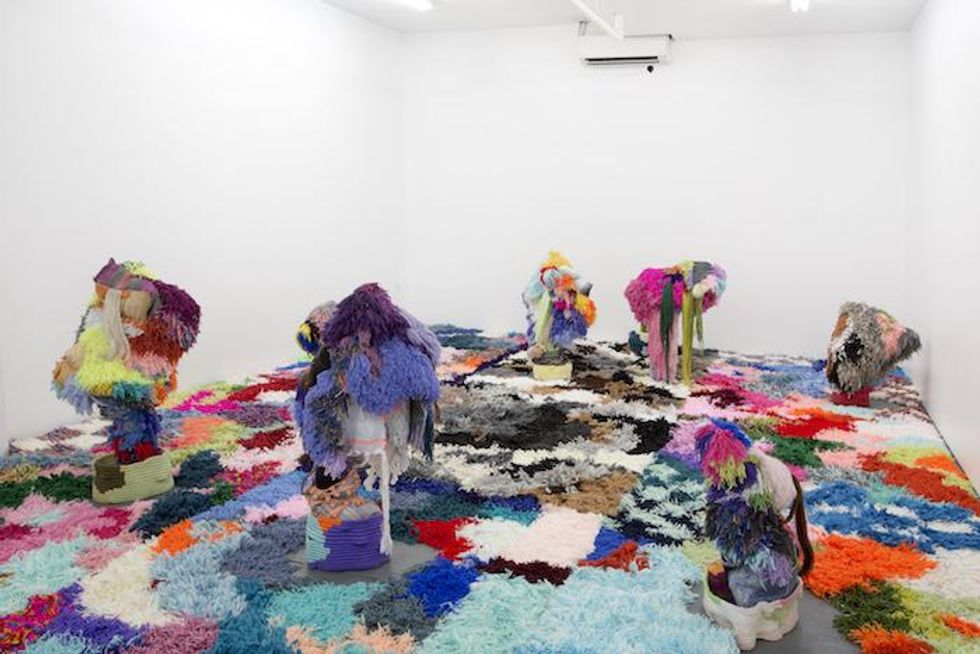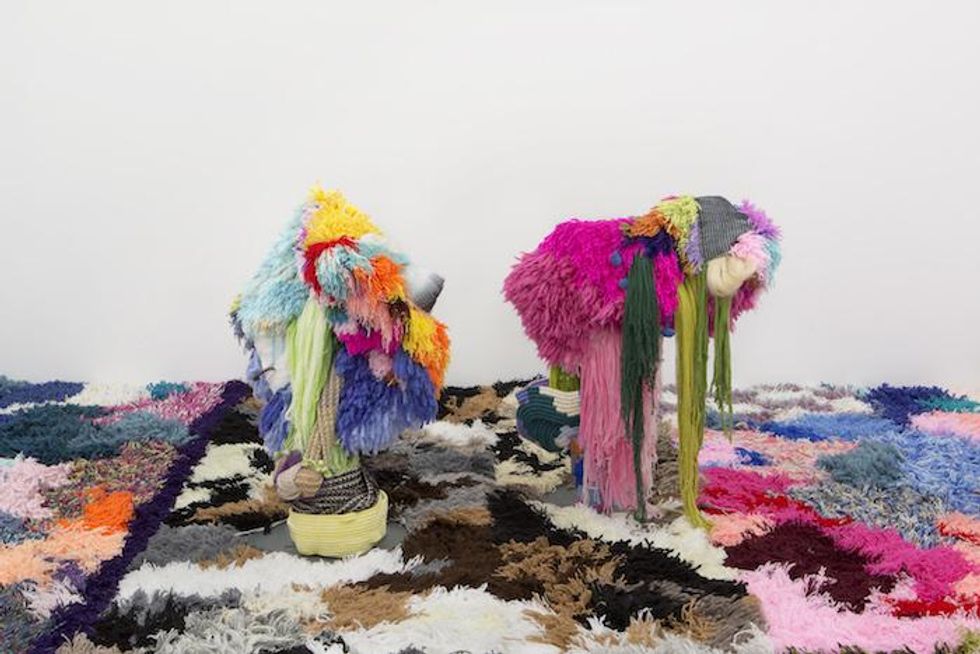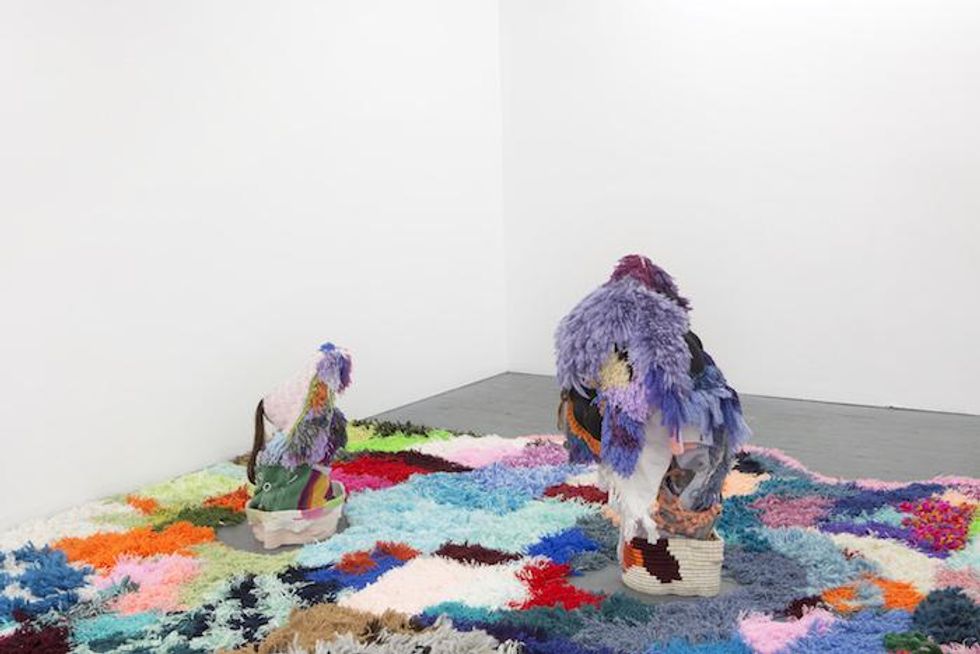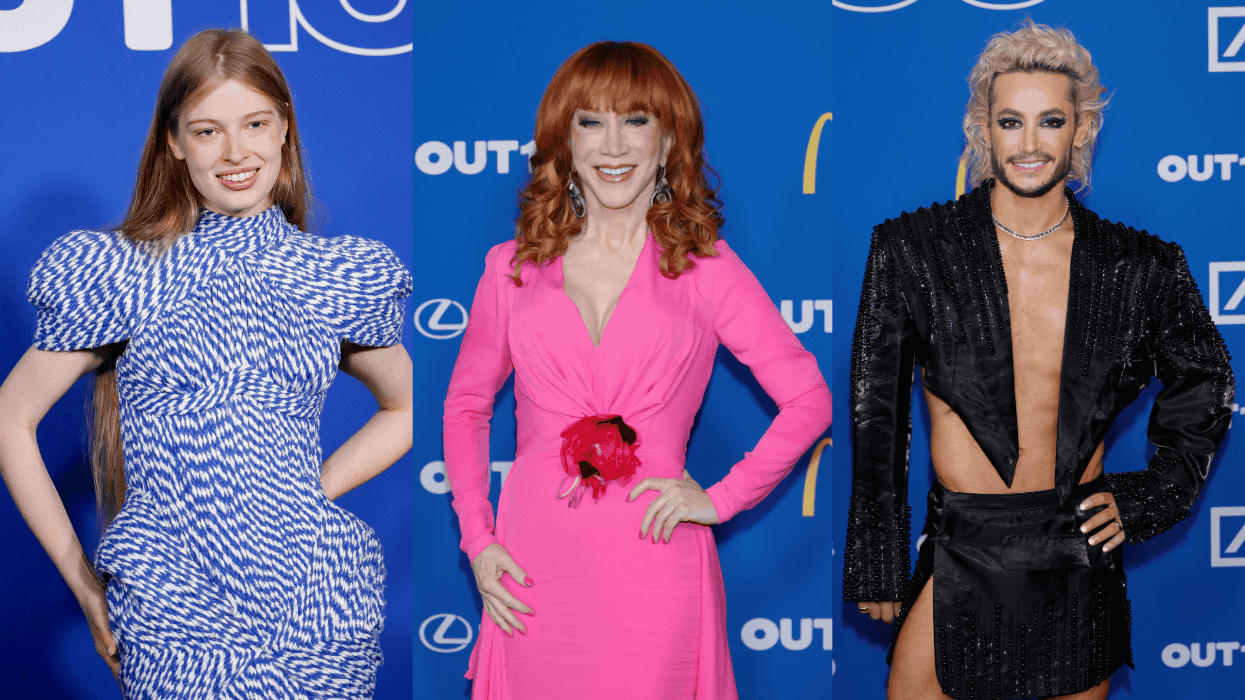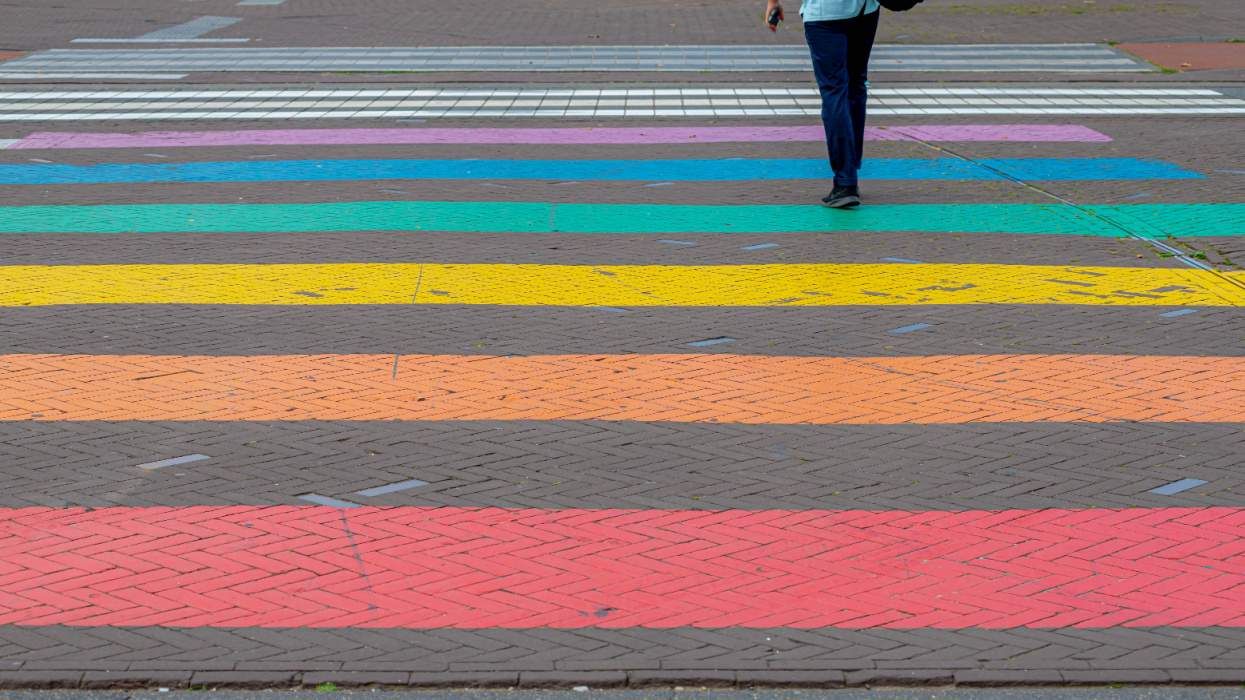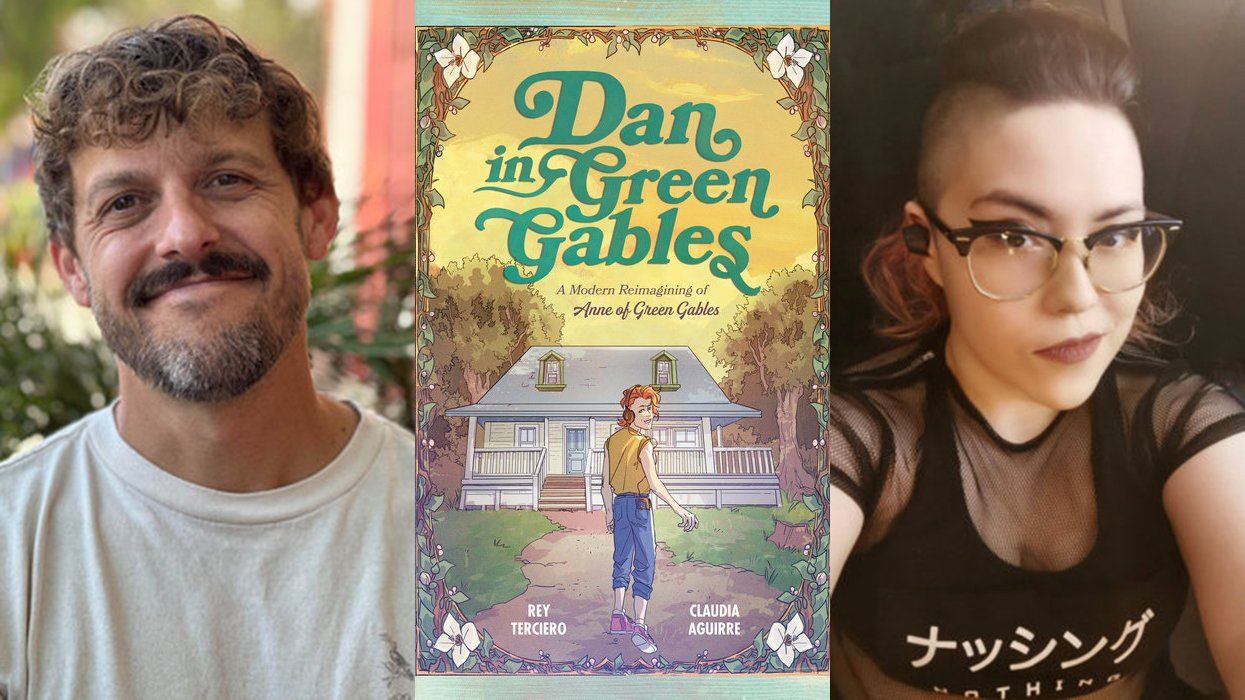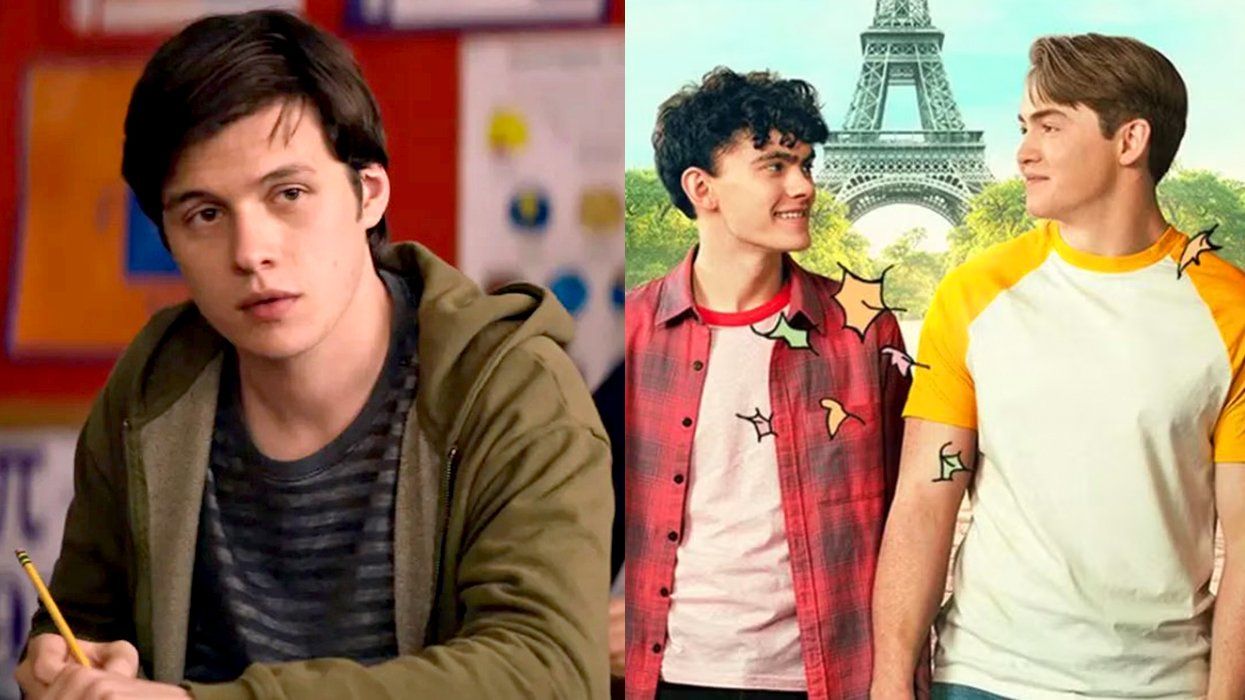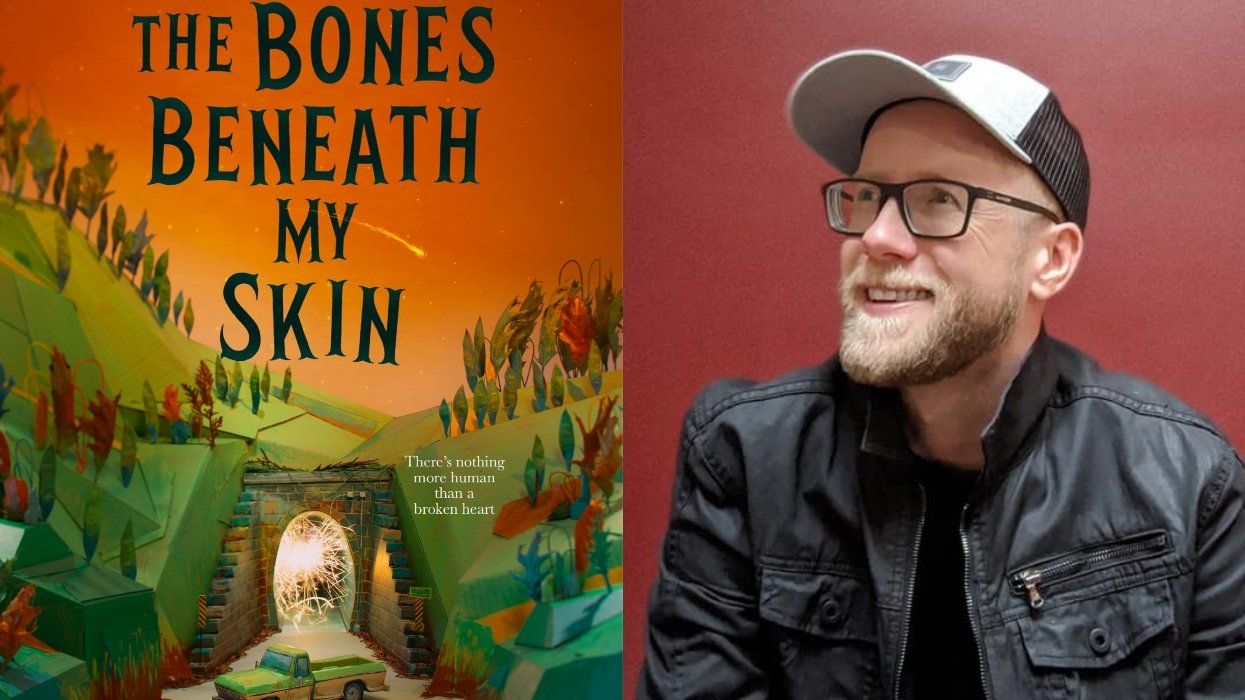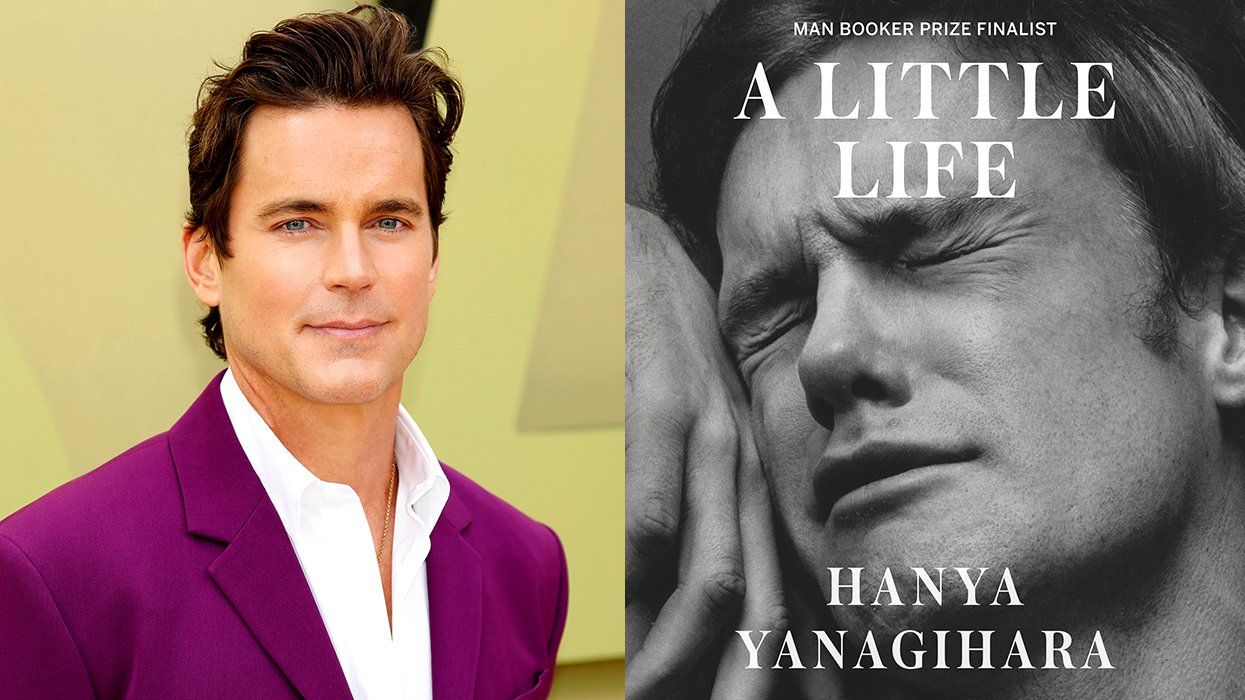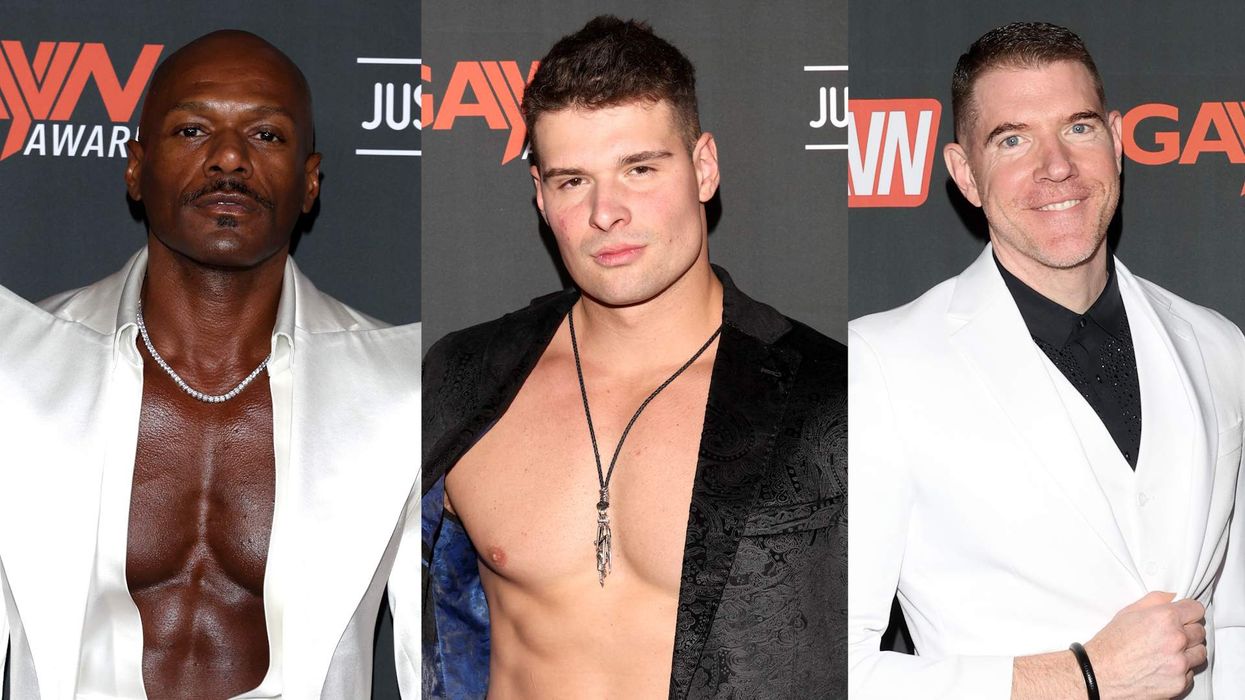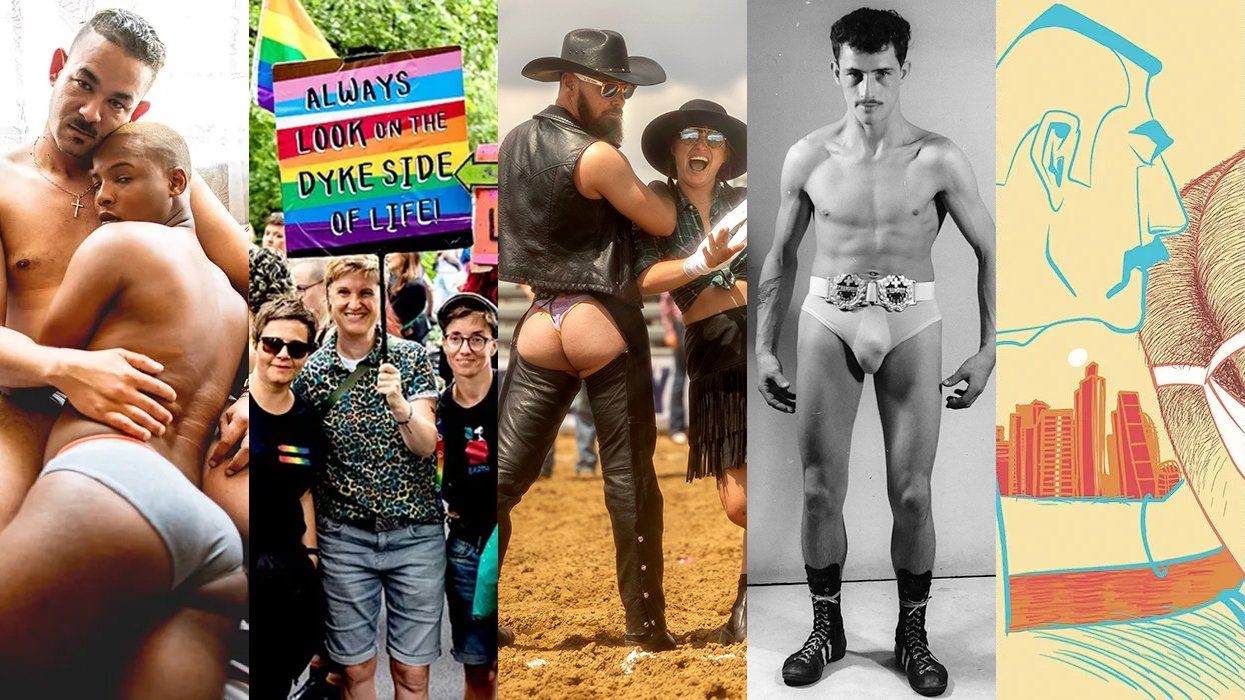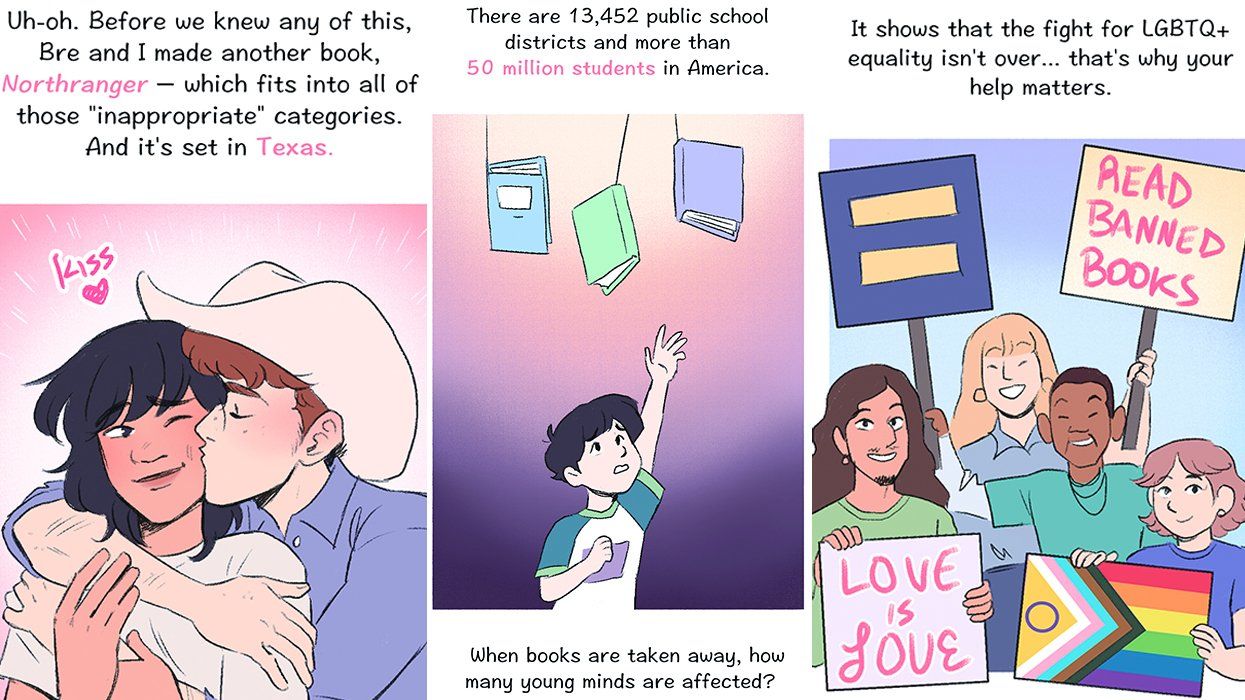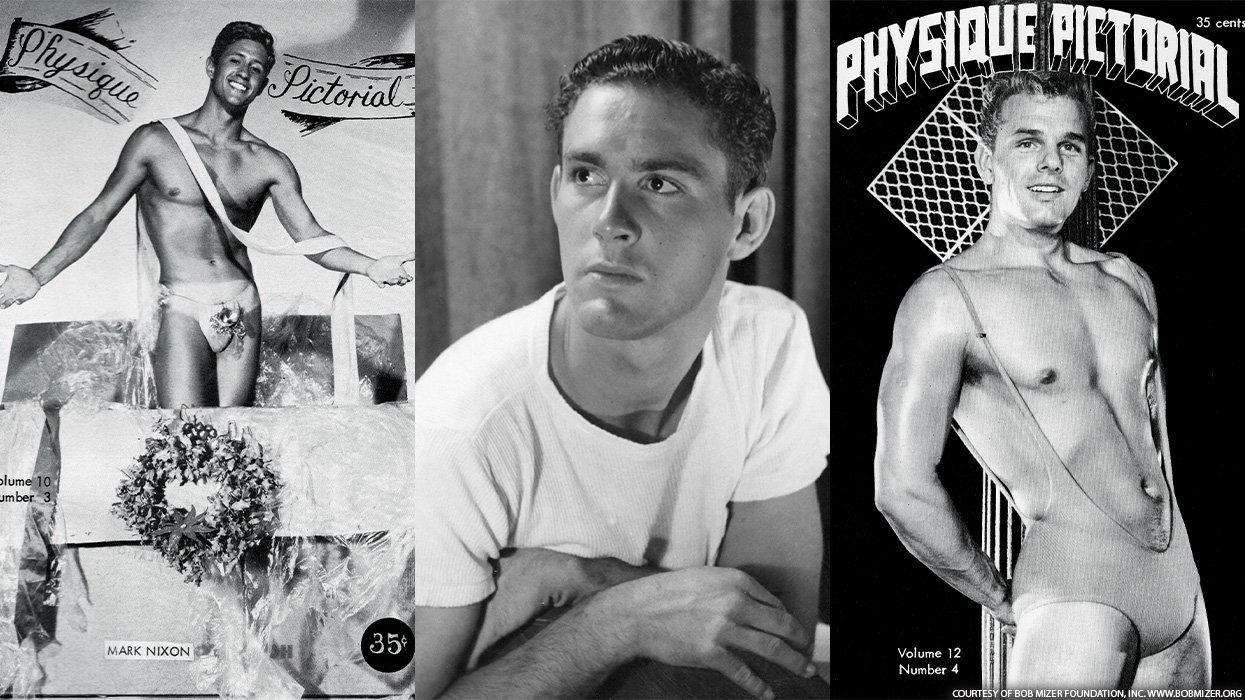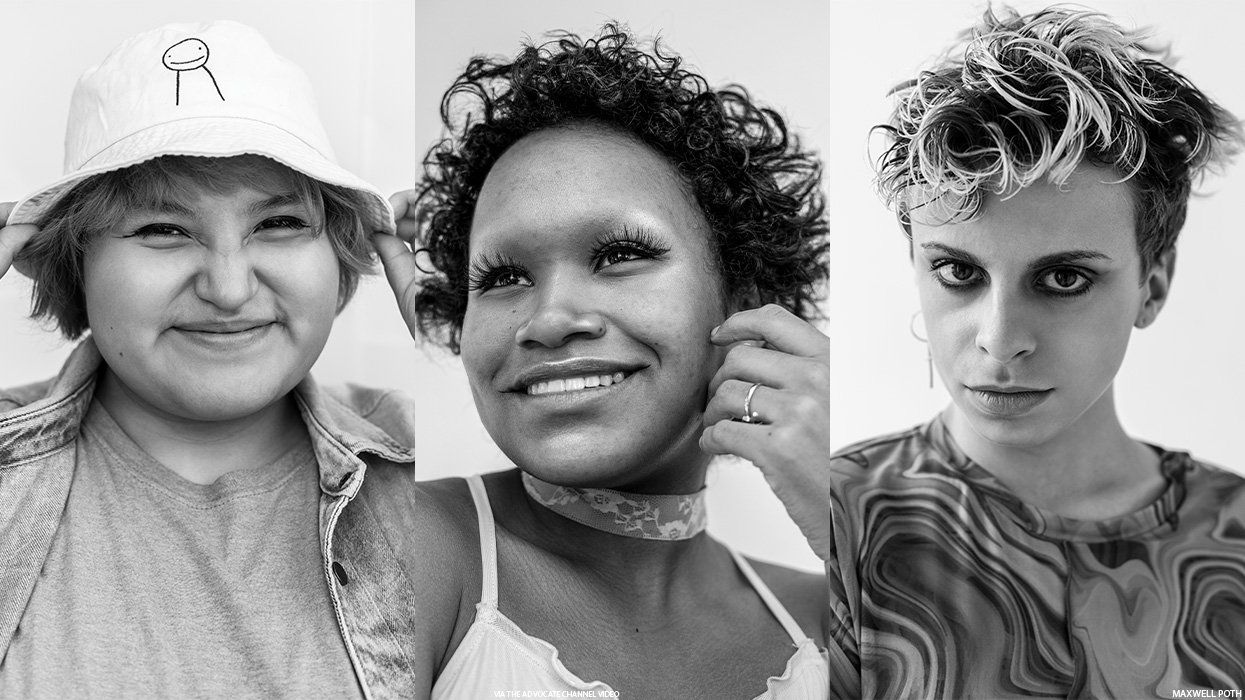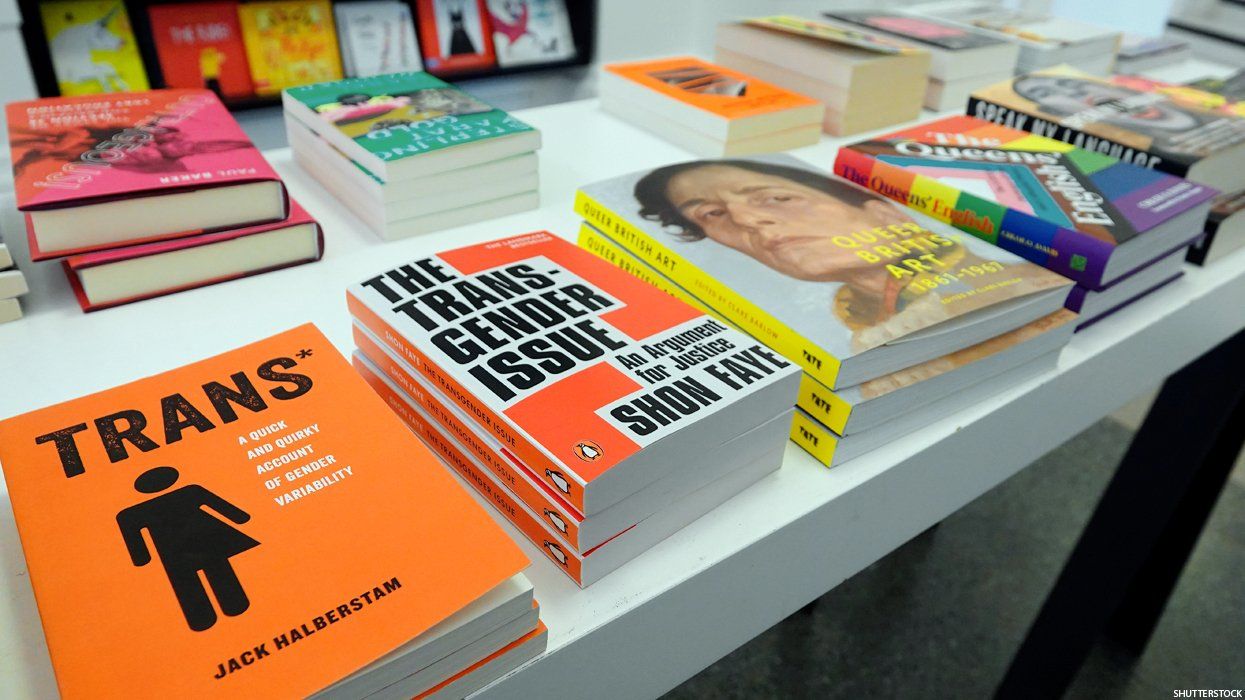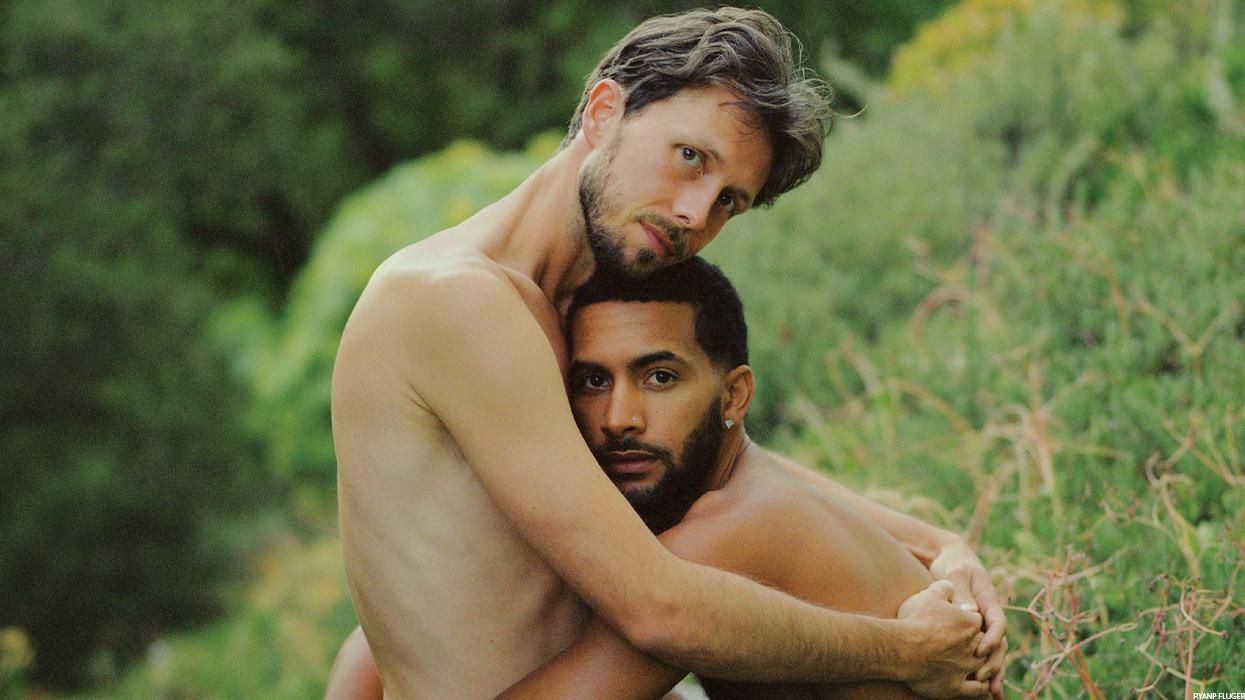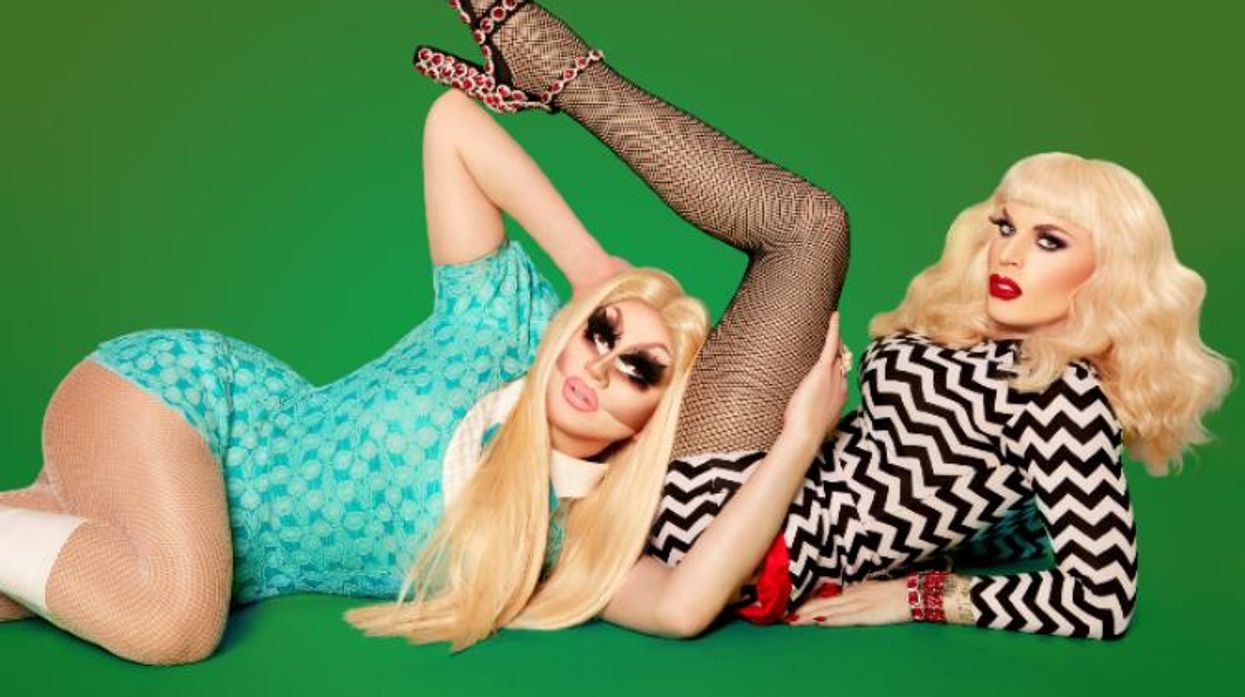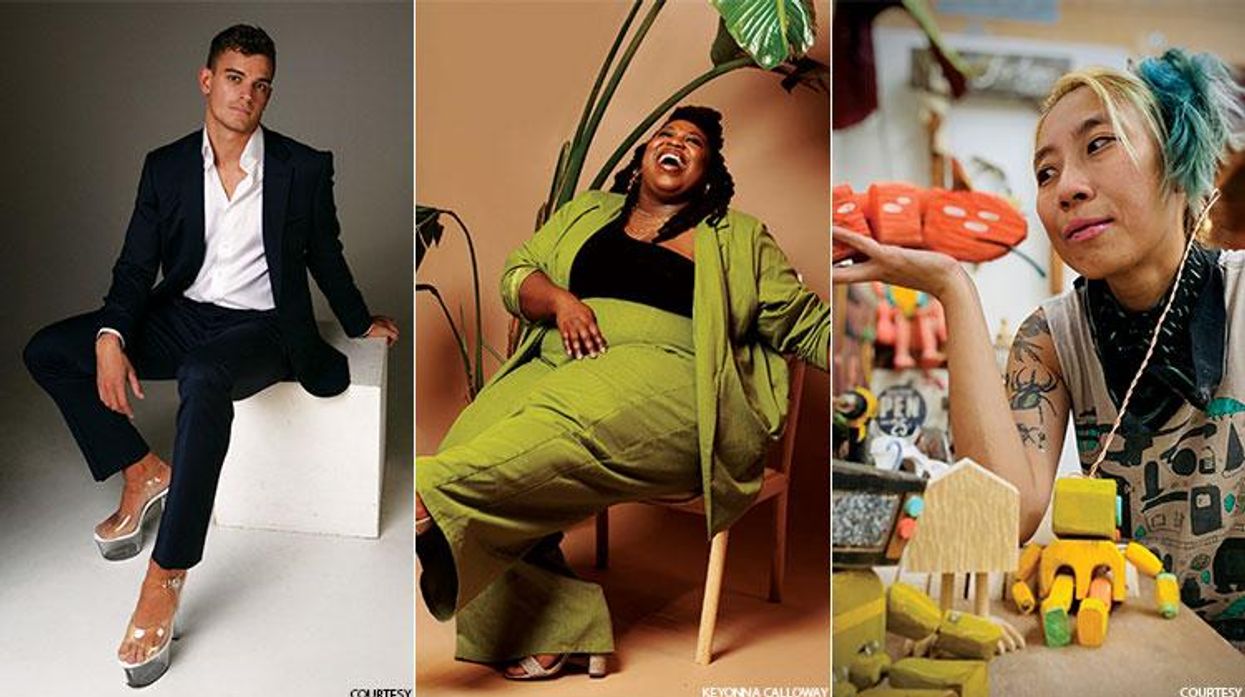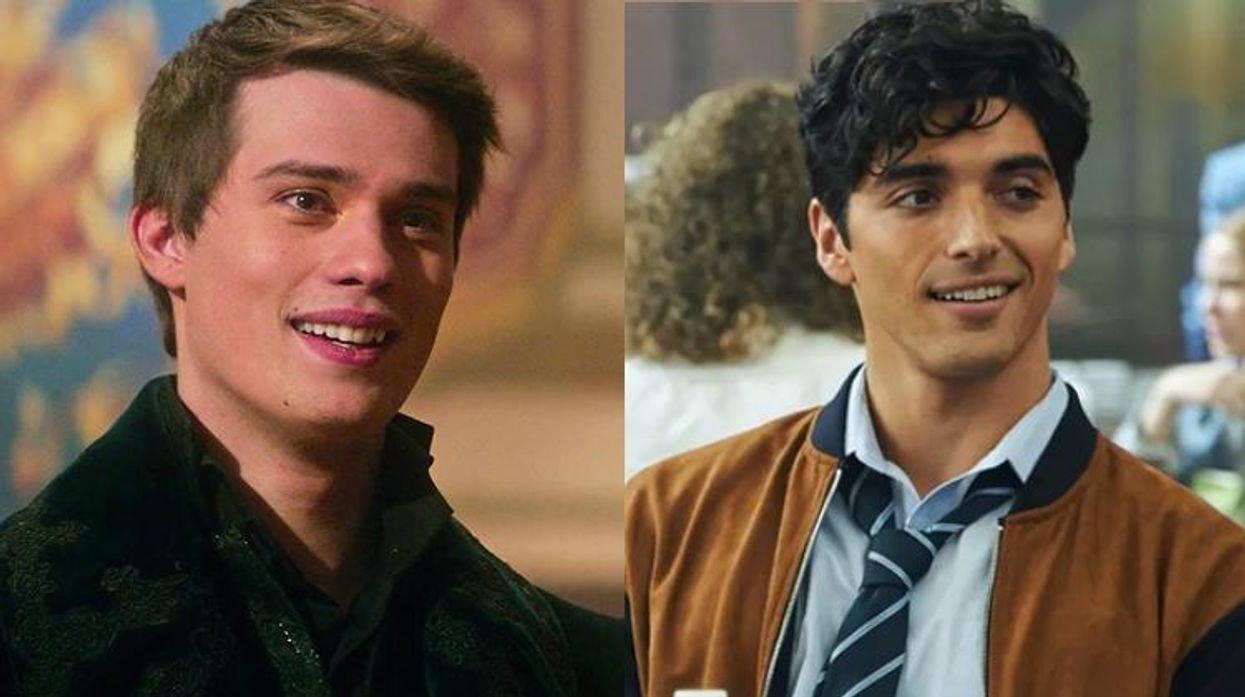With her solo show If I Could at Deli Gallery, queer New York-based artist Sarah Zapata crafted a yarn garden that envelopes you in kitschy comfort. Carpeted with handmade shag rugs and landscaped with textile sculptures that rise up from the floor like small trees, both the scale and softness invite you to take a seat. Yarn drips down from select works like weeping willow branches and the room's pastiche of colors feels at once childlike and wise to the universe's capriciousness. The exhibition, named after a 1970 song, "El Condor Pasa," examines Zapata's cultural identity as a Peruvian-American lesbian through an abstraction of traditional crafts used by women.
This past Sunday, inside the exhibition's soft shelter, Zapata organized an evening of reading, dance and music. A shoeless crowd gathered on the rugs to witness four performances. Andrea Arrubla read first, kneeling in the middle of the room recounting candid memories and piercing observations with vulnerability and aplomb. LA Warman read next, the intimate singsongy cadence of her voice contrasted by her choice to turn her face away from the audience, hidden by a tiny three-paneled curtain. Kayla Guthrie followed, crooning dreamy incantations over astral tunes while Monica Mirabile and Sarah Kinlaw closed out the program with a duet. The dancers began putting their feet in each other's mouths before transitioning to a choreographed routine complete with pantomimed pistols.
OUT caught up with Zapata at her studio to talk about designing the show as a forum for generative interaction, subverting the connotations of craft and the intergenerational queer art world.
OUT: In the text for this show, you've framed your textile practice as "gender and cultural performativity." What does that mean to you?
Sarah Zapata: Obviously I make women's work and I'm interested in the traditional aspects of that. There's still connotations that exist with women's work. Even though craft is really having a moment, it's still to some extent bastardized. I wanted to think about what is means to be a woman and blow that the fuck up. The show is kind of a pastiche of these connotations, like it's so handmade. I want the hand to be so present in these really bombastic capacities. I love the term, "Performativitiy." I think it's something that, as women, we have to think about and especially as a lesbian. It's like women are everything in my life. As much as I can, I want to showcase that, overly.
And then, I was born in Texas but I'm half Peruvian. I started getting really interested in textiles because I wanted to know more about my relationship to this culture. Peru has such a rich history of textile-making in so many capacities, and my grandfather was a textile salesman in Northern Peru. My father is an engineer, but I've heard that women that were weavers would have been engineers had they been born in another time. I want to talk about these two histories--the United Stares and Peru--and how I relate to them as a woman. It's easy for some who are mixed to turn their identity off and on when it's advantageous. For me it is about respect: I never want to assert that I am speaking for the cultures as a whole but also it is something I carry with me often.
Your work can exist in multiple spaces, as both art object and design object. You also collaborate with Olivia Galov and make wearable fashion pieces for the brand Daimorf. How do you navigate these different spaces?
Craft is having a moment in my mind because of technology. There's a push to preserve these handcrafts. What's so important and wonderful about textiles is that there's already this relationship that people have to them. I feel like it's easier to change perceptions of textiles because of that. With ceramics, it's a woman's object amongst flatware. I think the fluidity of textiles is really important.
Like everyone, the first thing they touch after being born other than another human is a blanket.
People are like animals with textiles. That's definitely something I wanted to work with in the show, too. You come into the space, but you can't touch the sculptures obviously. I wanted to give them an inch and ask for a mile, type of thing. I do like people interacting with the work. I think it's important.
How else did you think about choreographing the space? It seems like you consciously designed a very social environment.
I'm interested in making political work, but work that's not directly so. The idea for the space was to create an environment for people to talk and to create positive change, to some extent. For me, that starts with conversation and face-to-face interaction. I wanted it to be a space where people could sit and be alone or sit and talk to people, and for it to just be this fantasy to see how a change of mind can change perception and then experience and mutual experience.
The show is about humility. To come in the space, you have to remove your shoes. It's this ritual to change your mindset. I'm interested in humility and pushing myself. I feel like I have to work to my limits, to earn something. It's this whole Christian shame thing. I wanted people to experience that too in this overdone sense of the hand.
There's a humility in how much labor there is involved with what you do.
It's very labor intensive, definitely. But I love it. I have this idea that you have to suffer for your work and I never want to lose that.
How many hours of work do you think went into making this show?
I have no idea. It was just hours and hours. Thankfully I got a grant to pay for it, so I took off time from work but it was so intense and terrible, especially because most of the work happened after Trump got elected. I was so excited--it's such a privilege to get to work on my own work--but being alone every day for 12 hours a day listening to the news, it was just too intense. I think again that's why I wanted it to be this experience for people, even for healing.
Do you mostly listen to the news when you work?
I'll take breaks. I'll listen to NPR. Then I'll listen to books on tape. Shania Twain is really important. I listen to lectures, too.
At a point, when you do something so repetitive like weaving, does it become meditative?
You definitely have to be in charge of your mind because it is so mechanical. There have been points when I've been going through breakups and it's terrible because all you can do is go over the same personal problems in your mind, just dwelling. It's so terrible. I think that's the importance of the podcast and listening to music. But it is quite meditative.
You also write. Do you see it as one practice with the textiles?
My work is interested in women's traditional histories, but it's an ongoing investigation. The current administration could be seen as a return to traditional values. I know and am thankful for being able to live a very untraditional life by being an out lesbian. It's important to me to understand what histories can be edifying as an individual and what is detrimental to overall progress. Being raised evangelical Christian in Texas is still a personal history I deal with quite frequently. I started writing erotica to deal with a lot of shame that I still carry from that upbringing. Feet are a common archetype to talk about one's relationship to god, it's the part of the body that anchors and carries us through the world. A lot of my writing uses text and narratives from the Bible.
Did Christianity influence If I Could?
For this show, I wanted there to be an element of this Christian history. The sculptures are based off the Paracas mummy bundles, which were pre-Incan burials in southern Peru. Bodies were buried in a basket, with the individual in the fetal position to form this narrative of leaving the earth as you entered. The body was then wrapped and wrapped in handwoven textiles to create a sort of womb. These sculptures take similar form to this history, but inside are these steel crosses. I wanted something to be hidden on the interior to represent this life force. The crosses are bent or curved, which is a contentious symbol: there are verses in Revelation that say a curved cross is a mark of the beast. There is other text interpreted to say that the curved cross is a sign of the humility and death of Jesus. I like this very polarized stance of an object and interpretation of text can point to humility and to the marginalized.
You've just finished a residency in the desert. How was that?
It was really good and one of the weavings I did there is in the show. I went to AZ West with Andrea Zittel. It was fun. You get to shit in like a bucket and the community was really wonderful. It was a really nice balance. You could be alone or you could be with people. Joshua Tree is so alien.
It was really incredible and to see Andrea and her work and her studio and her house. It's crazy to see to the extent that she has designed her life. She's living in a house that she designed with furniture that she designed and fabricated. She designs her own clothes and people make them for her. And now she's starting to weave the fabric for her clothes. Even the people who come to the residency, they are invited. Even who she interacts with is very curated. It's certainly very interesting. I think she's a Virgo so everything is very controlled. It's so funny because I think everyone has a fantasy, "I want to be in my own world," and she really is.
Georgia O'Keefe too, she designed and made all her own clothes. It was her world. I feel like very few women get to do that.
You were in a group show at LAXart earlier this year. I know you are a big fan of Maggie Nelson's writing and then you're in this show with her partner Harry Dodge. I guess because the queer art world is so small, the boundaries between icon and peer become really porous.
That was a huge honor. and actually when I went to the desert, I went to LA afterwards. When I went to see that show, and Harry Dodge was having a conversation with Candice Lin, and I got to meet him and he was like, "Oh I love your work." I really died. That's a really hard thing to navigate to be honest. The queer art world is really small but I definitely feel really nervous all the time. Like I know K8 Hardy and A.K. Burns and Katherine Hubbard. I know them and they are really wonderful, but I'm just nervous all the time just because I don't feel like I'm there yet, but I like having that intergenerational conversation definitely. It's so incredible to see people who have made these incredible lives for themselves. Growing up in Texas, queer visibility was so low. I didn't really know what a lesbian was until late teens and I came out at 21. New York is just such an incredible community, and I'm so thankful to live in a place where there is not only visibility and engagement but generations that respect one another. It's like it shouldn't be but it is and I love it.
"If I Could" runs until April 9 at Deli Gallery, 10-16 46th Avenue, Long Island City, Queens.



